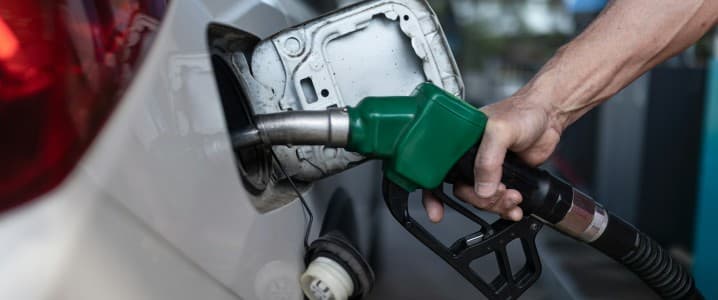Gasoline prices in the U.S. are flirting with a milestone not seen since 2021: a national average below $3 per gallon. The combination of tepid summer demand, surging imports, and a bearish oil market has put downward pressure on prices—even during what’s typically peak driving season.
In the runup to the July 4th holiday, the national average fell to $3.14 per gallon, according to GasBuddy. This is the lowest summer level in four years, according to AAA. Finished motor gasoline product supplied (a proxy for demand) during the July 4 holiday week dropped 2.5% compared to the same period last year, according to the EIA—an abrupt contrast to AAA’s record-breaking forecast of 61.6 million car travelers over the holiday period. Analysts attribute the unexpected lull to oppressive heat and changing driving patterns, not a lack of folks on the road.
Imports are playing an outsized role in the supply-demand imbalance. U.S. gasoline imports hit a 12-month high in mid-June, driven by Canadian and European cargoes, including consistent flows from Irving Oil in New Brunswick and Nigeria’s Dangote refinery. Storage demand has spiked accordingly, with tank space on the East Coast—where one-third of U.S. refined product is consumed—nearing capacity.
Colonial Pipeline has even raised its Line 1 capacity by up to 7% to accommodate the growing glut.
And while analysts love to claim presidents have little control over pump prices, that view is overly simplistic. No, U.S. presidents can’t dictate retail prices like a Gulf monarchy, but their policies, permitting reforms, rhetoric, and geopolitical maneuvering—from Iran posturing to trade wars—ripple through oil markets. Every OPEC call, SPR release, or Fed critique helps shape market sentiment. Influence isn’t control, but it matters.
With OPEC now boosting output by 548,000 bpd in August and refiners enjoying cheap crude and full tanks, prices could fall further. “There’s a good chance we break below $3 in September,” said GasBuddy’s Patrick De Haan. That would be good news for drivers—but ominous for margins.
By Julianne Geiger for Oilprice.com
More Top Reads From Oilprice.com

